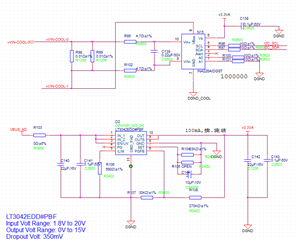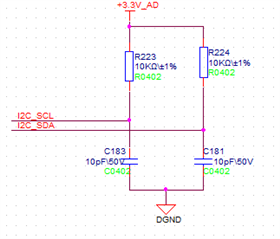Hi Sir Or madam,
INA226 on our board has been failing frequently recently.
Phenomenon: INA226 collects the voltage and current of the load, transmits it to FPGA through I2C, and then transmits it to the upper computer through serial port. However, the voltage and current monitoring is 0 frequently recently (the load voltage is 24V; Load current is dynamic, 200-500mA dynamic change) ,I tested the power supply voltage of the chip and the impedance of each PIN to the ground on the board. The voltage of the 6th PIN VS of the chip was 0.85V and the impedance to the ground was 114 Ω,After the replacement of INA226 chip, the voltage and current monitoring on the upper computer are normal, but the problem has not been figured out.
Schematic diagram is as follows:



